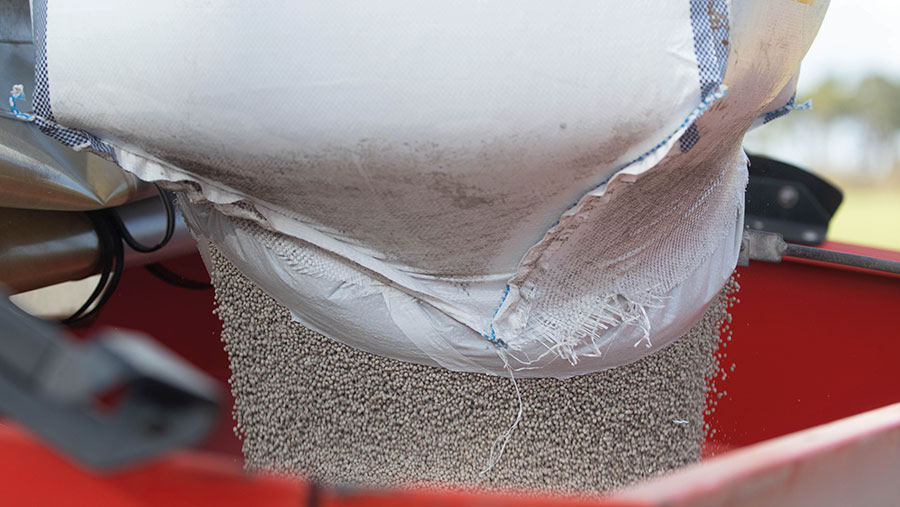AN fertiliser price drop welcome but still unaffordable for many
 © Tim Scrivener
© Tim Scrivener Following a £125/t drop in CF Fertilisers’ ammonium nitrate (AN) price late last week, UK product is going onto farm at £775-£790/t this month.
Availability is reportedly good, and with the requirements for arable areas more or less covered now, traders see this as an attempt to bring in orders from grassland regions, where the recent £900-plus/t prices have proved prohibitive for many.
Imported AN is priced at up to £15/t below the cost of UK material.
See also: Johnson accused of failing to grasp fertiliser crisis impact
“Blenders and importers have had to react to the drop and are not happy as most have stock in store or arriving above the level where CF now are,” said one national trader.
“It’s still very quiet, with some top-up orders starting to trickle in, but not much appetite, especially from the grassland sector.”
Midweek, urea was going onto farm in a relatively wide range of £925-£950/t, in a market which has stabilised to some extent.
With a big Indian tender for supply about to be released, and the US still to buy a fair tonnage, traders advise not to expect any imminent drop in this sector of the market.
Urea prices have also been offered for autumn supply, with most for July to December delivery at £905-£920/t.
However, this is on a seller’s option basis, so buyers need to be able to take delivery in the period when the seller wants to move the product.
Straights prices continue to climb, with phosphate leading the way – triple super phosphate was at £735-£775/t midweek, while diammonium phosphate was £1,050- £1,115/t delivered.
Muriate of potash ranged from £640/t to £685/t for April delivery.
Round table
Farming minister Victoria Prentis met representatives from the Agricultural Industries Confederation, along with other industry stakeholders, at a fertiliser industry round table last week to discuss prices and supply
Jo Gilbertson, AIC head of sector for fertilisers, said: “It was a constructive and co-operative meeting, and we look forward to further news from Defra.”
